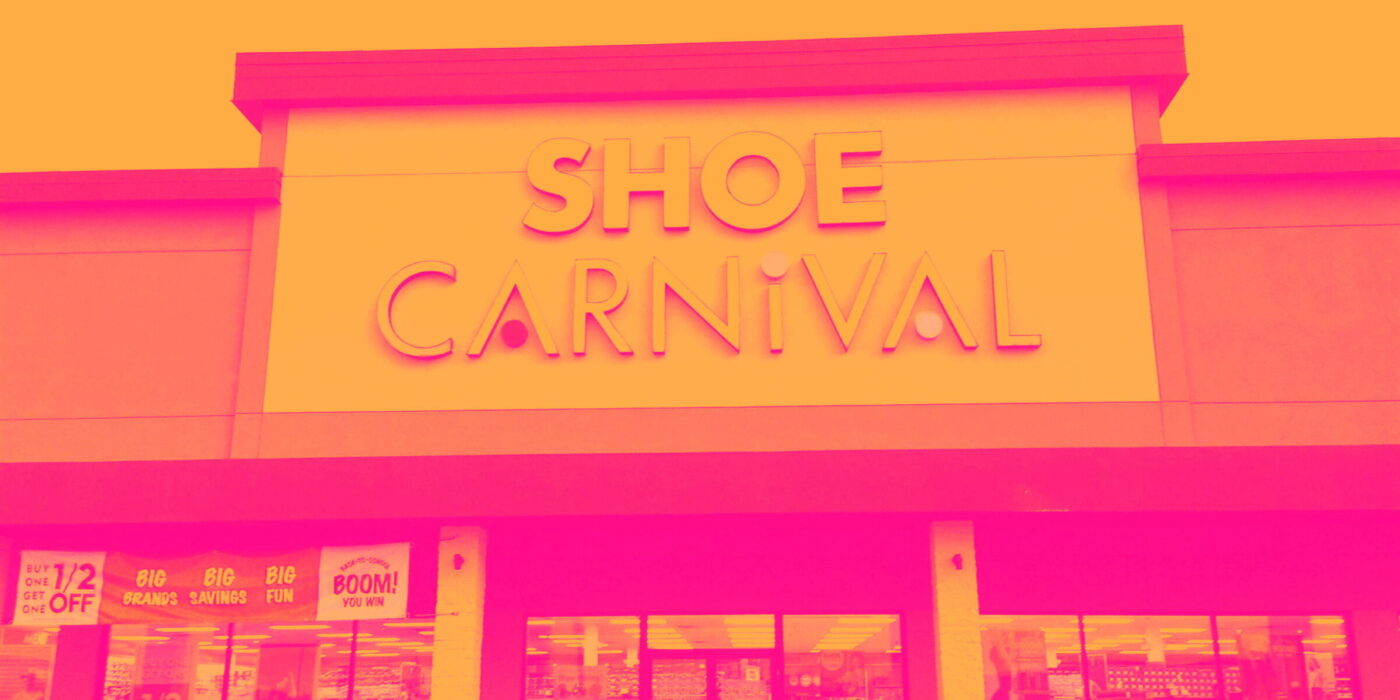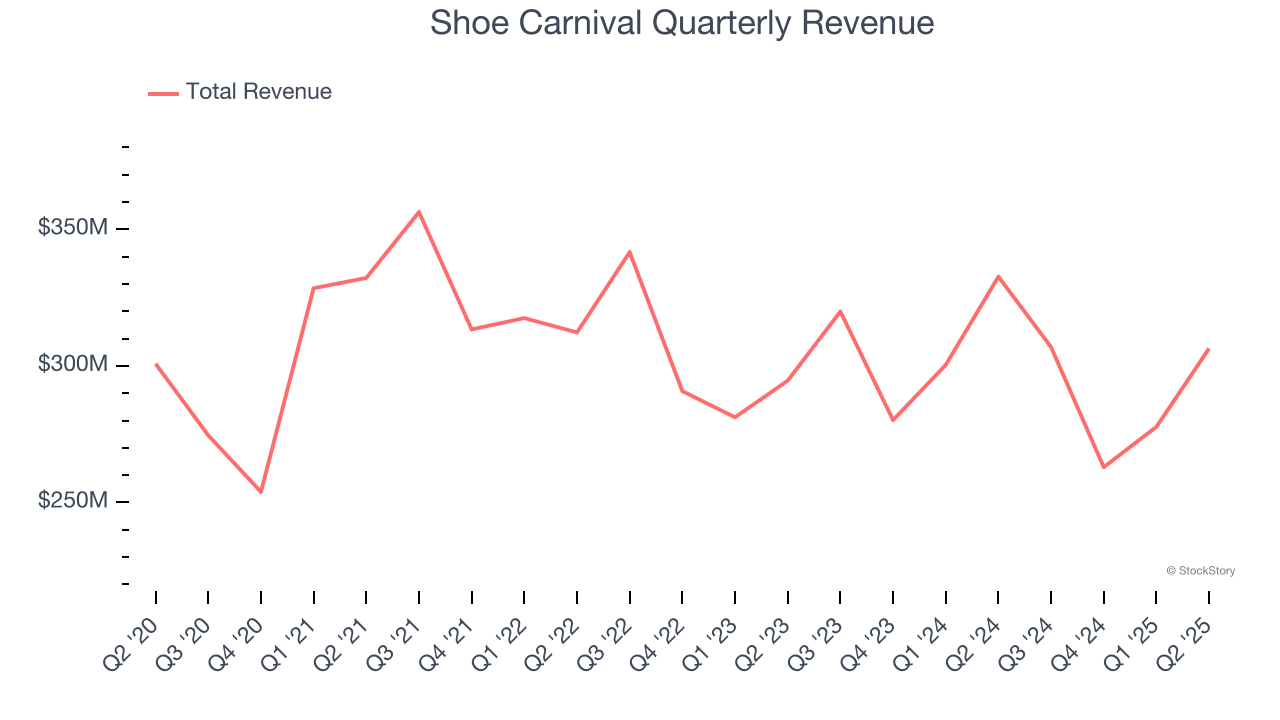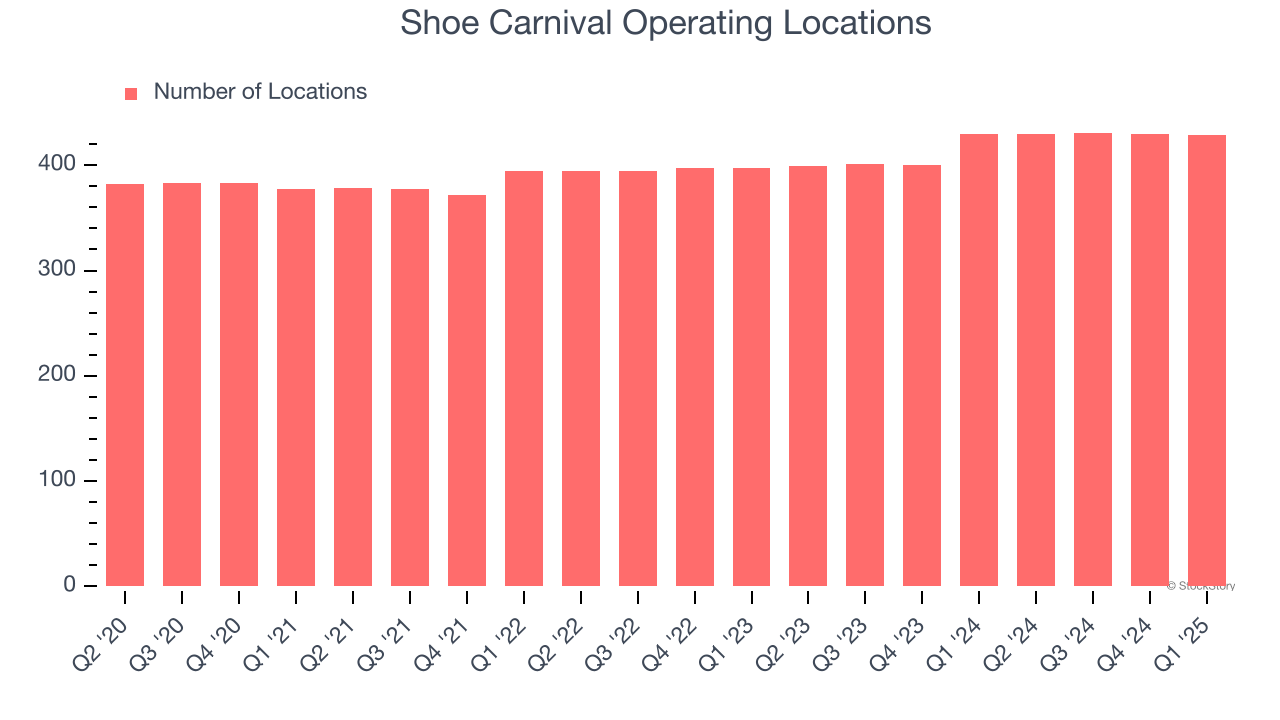
Footwear retailer Shoe Carnival (NASDAQ:SCVL) missed Wall Street’s revenue expectations in Q2 CY2025, with sales falling 7.9% year on year to $306.4 million. The company’s full-year revenue guidance of $1.14 billion at the midpoint came in 1.9% below analysts’ estimates. Its GAAP profit of $0.70 per share was 15.4% above analysts’ consensus estimates.
Is now the time to buy Shoe Carnival? Find out by accessing our full research report, it’s free.
Shoe Carnival (SCVL) Q2 CY2025 Highlights:
- Revenue: $306.4 million vs analyst estimates of $314.1 million (7.9% year-on-year decline, 2.5% miss)
- EPS (GAAP): $0.70 vs analyst estimates of $0.61 (15.4% beat)
- Adjusted EBITDA: $32.11 million vs analyst estimates of $30.1 million (10.5% margin, 6.7% beat)
- The company dropped its revenue guidance for the full year to $1.14 billion at the midpoint from $1.19 billion, a 4.6% decrease
- EPS (GAAP) guidance for the full year is $1.90 at the midpoint, beating analyst estimates by 4.8%
- Operating Margin: 8.2%, in line with the same quarter last year
- Free Cash Flow Margin: 0.7%, down from 5.5% in the same quarter last year
- Same-Store Sales fell 7.5% year on year (-2.1% in the same quarter last year)
- Market Capitalization: $588.5 million
“Our second quarter results demonstrate meaningful progress, with profits beating consensus by double digits and gross margins reaching 38.8 percent - our strongest Q2 margin performance in years,” said Mark Worden, President and Chief Executive Officer.
Company Overview
Known for its playful atmosphere that features carnival elements, Shoe Carnival (NASDAQ:SCVL) is a retailer that sells footwear from mainstream brands for the entire family.
Revenue Growth
Examining a company’s long-term performance can provide clues about its quality. Any business can put up a good quarter or two, but many enduring ones grow for years.
With $1.15 billion in revenue over the past 12 months, Shoe Carnival is a small retailer, which sometimes brings disadvantages compared to larger competitors benefiting from economies of scale and negotiating leverage with suppliers.
As you can see below, Shoe Carnival’s 2% annualized revenue growth over the last six years (we compare to 2019 to normalize for COVID-19 impacts) was sluggish.

This quarter, Shoe Carnival missed Wall Street’s estimates and reported a rather uninspiring 7.9% year-on-year revenue decline, generating $306.4 million of revenue.
Looking ahead, sell-side analysts expect revenue to grow 1.4% over the next 12 months, similar to its six-year rate. This projection doesn't excite us and indicates its newer products will not lead to better top-line performance yet.
Here at StockStory, we certainly understand the potential of thematic investing. Diverse winners from Microsoft (MSFT) to Alphabet (GOOG), Coca-Cola (KO) to Monster Beverage (MNST) could all have been identified as promising growth stories with a megatrend driving the growth. So, in that spirit, we’ve identified a relatively under-the-radar profitable growth stock benefiting from the rise of AI, available to you FREE via this link.
Store Performance
Number of Stores
Shoe Carnival opened new stores at a rapid clip over the last two years, averaging 4.7% annual growth, much faster than the broader consumer retail sector. This gives it a chance to scale into a mid-sized business over time.
When a retailer opens new stores, it usually means it’s investing for growth because demand is greater than supply, especially in areas where consumers may not have a store within reasonable driving distance.
Note that Shoe Carnival reports its store count intermittently, so some data points are missing in the chart below.

Same-Store Sales
The change in a company's store base only tells one side of the story. The other is the performance of its existing locations and e-commerce sales, which informs management teams whether they should expand or downsize their physical footprints. Same-store sales is an industry measure of whether revenue is growing at those existing stores and is driven by customer visits (often called traffic) and the average spending per customer (ticket).
Shoe Carnival’s demand has been shrinking over the last two years as its same-store sales have averaged 6% annual declines. This performance is concerning - it shows Shoe Carnival artificially boosts its revenue by building new stores. We’d like to see a company’s same-store sales rise before it takes on the costly, capital-intensive endeavor of expanding its store base.

In the latest quarter, Shoe Carnival’s same-store sales fell by 7.5% year on year. This decrease represents a further deceleration from its historical levels. We hope the business can get back on track.
Key Takeaways from Shoe Carnival’s Q2 Results
We were impressed by how significantly Shoe Carnival blew past analysts’ gross margin expectations this quarter. We were also glad its full-year EPS guidance exceeded Wall Street’s estimates. On the other hand, its revenue missed and its full-year revenue guidance fell short of Wall Street’s estimates. Overall, we think this was still a mixed quarter. It seems expectations were low, and the stock traded up 7.5% to $23.13 immediately after reporting.
Sure, Shoe Carnival had a solid quarter, but if we look at the bigger picture, is this stock a buy? We think that the latest quarter is only one piece of the longer-term business quality puzzle. Quality, when combined with valuation, can help determine if the stock is a buy. We cover that in our actionable full research report which you can read here, it’s free.
